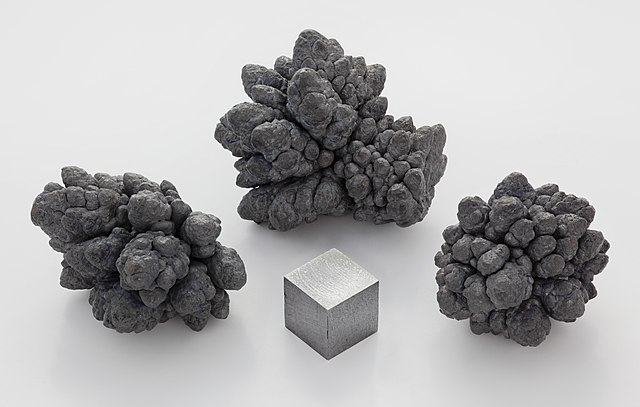
Why is lead poisonous? It settles in cells and interferes with many different enzymes, preventing the cells from working properly.
Lead is a heavy metal that is very dense. It is also fairly soft. These days, a lot is known about lead poisoning, so lead is treated very carefully in factories and in devices that use it. That wasn’t always the case. Lead poisoning has been known about for thousands of years. The Romans extensively used lead in their water pipes, aqueducts, and cooking utensils. They knew that it made people sick, and yet they continued to use it. Lead was fairly cheap, very easy to mold into pipe shapes, and, apart from the poisonous bit, very reliable. The effects of lead poisoning could take a while to show and the Romans didn’t think lead was toxic enough to need worrying about. It was probably easier to deal with the poisoning than it was to find a replacement material. The Romans used so much lead in their pipes that the word “plumbing” comes from the Latin “plumb”, meaning lead. This knowledge that lead wasn’t great for us, but wasn’t terrible lasted until the middle of the 18th century and lead pipes were still in use as late as 1986. Lead paint was also fairly common.
How does lead get into the body? It depends where it is coming from, but if it is lead in water pipes then it leaches into the water. The moving water corrodes the lead pipe and tiny amounts of lead are dissolved into the water. The dissolved lead has no color, taste or smell, so it is very difficult to detect. Lead in paint is also a large source of toxin. Lead is added to paint as a pigment and also because it helps the paint dry faster, makes it more durable, and makes it more water resistant. However, if you have lead paint on your walls it can get into your body as flakes and dust. We often touch the walls and we often touch our mouths. Lead dust can easily go from a wall into our bodies. There is a high chance that anything painted before 1978 has lead in it. Up until fairly recently, gasoline also contained lead and there was a lot of lead in the air around major roads. It was very easy to inhale enough lead to get sick.
What does lead do when it gets into the body? There are many toxins that we can ingest and our body tries to deal with them in different ways. Some it can break down and dispose of. There are other toxins that can kill the body before it can stop them. Lead is different because it is not instantly harmful. Because lead is a heavy metal, it is impossible for the body to get it out. Once it is in the body it gets absorbed into the blood stream and circulates around the body. It is deposited in the major organs, such as the brain, kidneys, liver, and heart. The body can’t tell the difference between lead and calcium, so lead in the body is built into the bones and stored there. Lead can stay in the bones for decades. Occasionally being put back into the blood stream. It can take many years before the signs of lead poisoning are obvious because the quantity of lead in the body can slowly increase.
Lead has a number of different effects on the body. It accumulates in cells and interferes with enzymes, preventing the cells from working properly. To the body, lead is indistinguishable from calcium, and it can get in the way and interfere with many of the jobs that calcium does in the cells. This similarity to calcium also means that lead can pass into the brain. We have a protective section between our brain and our blood, called the blood brain barrier, that is there to stop pathogens and dangerous things reaching the brain. We need calcium in our brain, so it is able to cross this barrier. The body thinks that lead is calcium and lets it pass the barrier into the brain. Once there it can prevent the neurons in the brain sending and receiving signals, and it can damage the cells within the brain. Lead poisoning in adults is very dangerous, but in children it can cause a whole range of developmental delays and problems. Luckily, the dangers of lead have been well understood for the last forty years and the risk is much lower than it used to be, although there is still some risk. And this is what I learned today.
Image By Alchemist-hp (talk) (www.pse-mendelejew.de) – Own work, FAL, https://commons.wikimedia.org/w/index.php?curid=12381318
http://thurstonpud.org/docs/Lead-In-My-Drinking-Water.pdf
https://en.wikipedia.org/wiki/Lead
https://www.niehs.nih.gov/health/topics/agents/lead/index.cfm
https://theconversation.com/why-lead-is-dangerous-and-the-damage-it-does-116506
https://www.who.int/news-room/fact-sheets/detail/lead-poisoning-and-health
https://en.wikipedia.org/wiki/Lead_poisoning
https://www.nrdc.org/stories/causes-and-effects-lead-water
https://www.leadsafemanchester.com/Lead-and-the-Body
https://www.ncbi.nlm.nih.gov/pmc/articles/PMC2858639/
